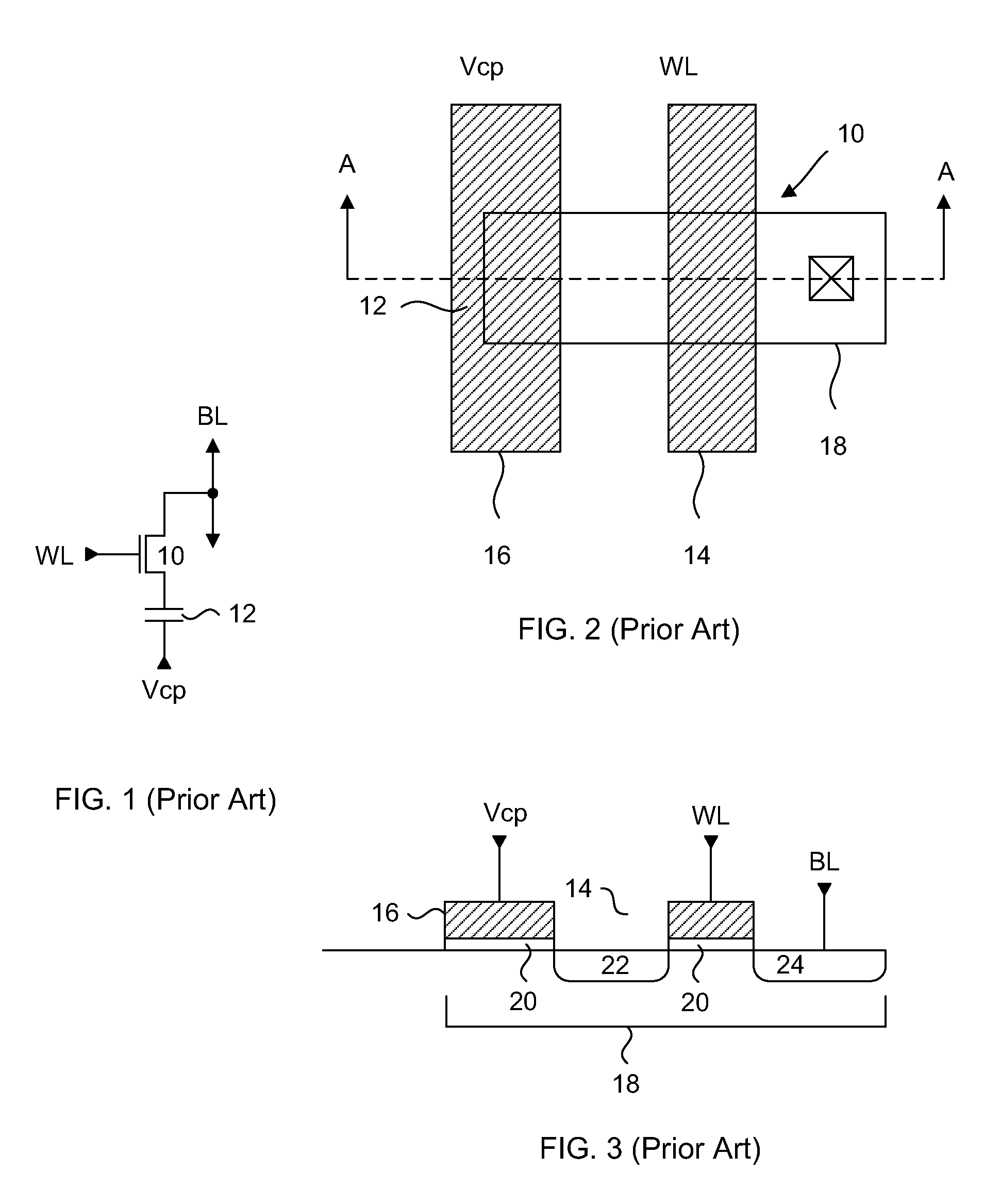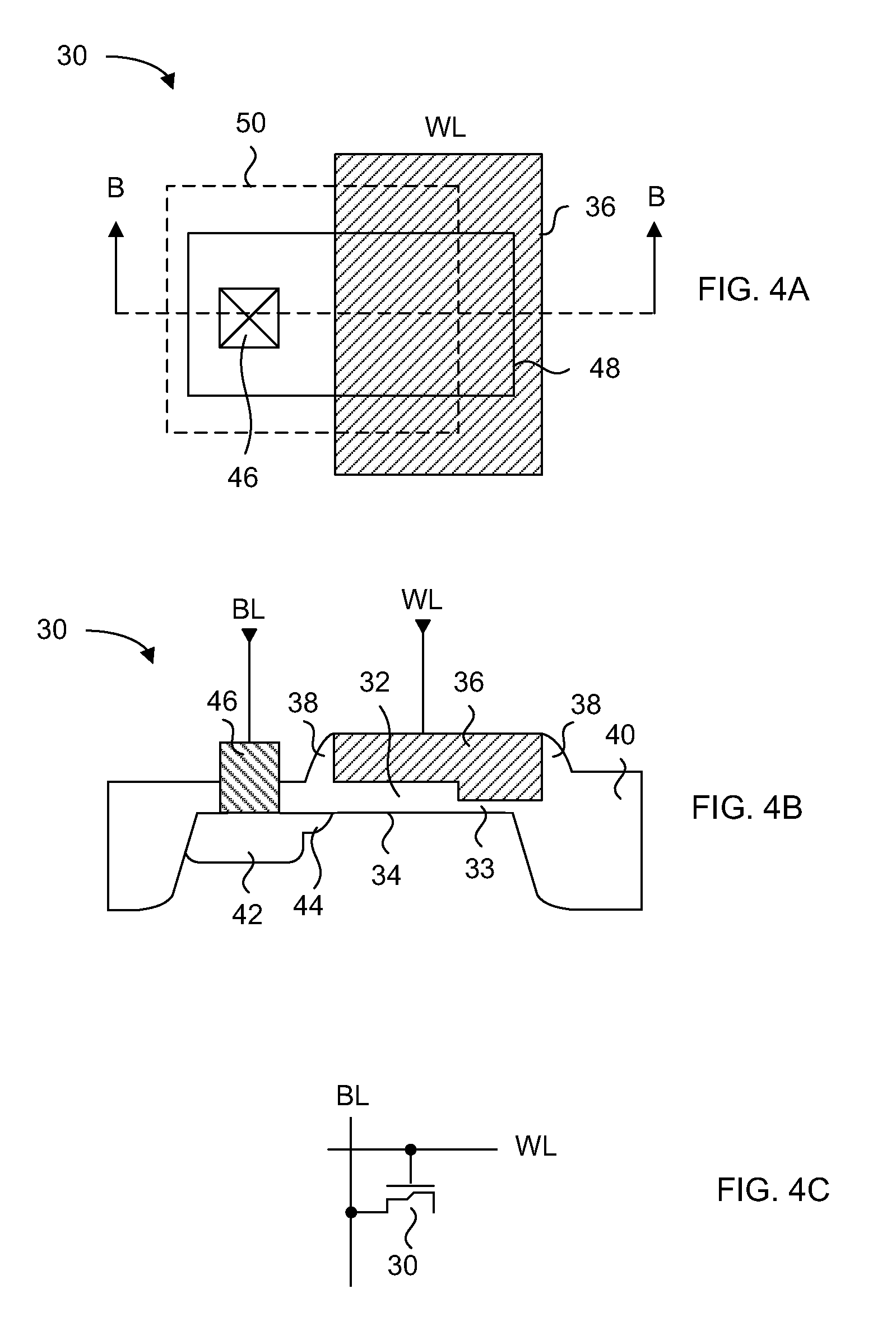Low power antifuse sensing scheme with improved reliability
a low-power, anti-fuse technology, applied in the direction of digital storage, semiconductor/solid-state device details, instruments, etc., can solve the problems of reducing the reliability of anti-fuse memories, increasing the current flowing through the defects, and reducing so as to reduce the oxide breakdown of anti-fuse memories and mitigate the disadvantage of previous anti-fuse memories
- Summary
- Abstract
- Description
- Claims
- Application Information
AI Technical Summary
Benefits of technology
Problems solved by technology
Method used
Image
Examples
Embodiment Construction
[0042]Generally, the present invention provides a method and circuit for improving the reliability and retention of unprogrammed anti-fuse memory cells. This is achieved by minimizing the tunneling current through the unprogrammed anti-fuse memory cells which can cause eventual gate oxide breakdown. The amount of time a read voltage is applied to the anti-fuse memory cells is reduced by pulsing a read voltage applied to a wordline connected to the unprogrammed anti-fuse memory cells, thereby reducing the tunneling current. Further tunneling current can be reduced by decoupling the unprogrammed anti-fuse memory cells from a sense amplifier that can drive the corresponding bitline to VSS.
[0043]The embodiments of the present invention can be applied to the anti-fuse memory cell of FIGS. 1 to 3. A disadvantage of the anti-fuse memory cell of FIGS. 1 to 3 is that two devices form the memory cell, an access transistor 10 and anti-fuse device 12, thereby increasing its footprint relative t...
PUM
 Login to View More
Login to View More Abstract
Description
Claims
Application Information
 Login to View More
Login to View More - R&D
- Intellectual Property
- Life Sciences
- Materials
- Tech Scout
- Unparalleled Data Quality
- Higher Quality Content
- 60% Fewer Hallucinations
Browse by: Latest US Patents, China's latest patents, Technical Efficacy Thesaurus, Application Domain, Technology Topic, Popular Technical Reports.
© 2025 PatSnap. All rights reserved.Legal|Privacy policy|Modern Slavery Act Transparency Statement|Sitemap|About US| Contact US: help@patsnap.com



